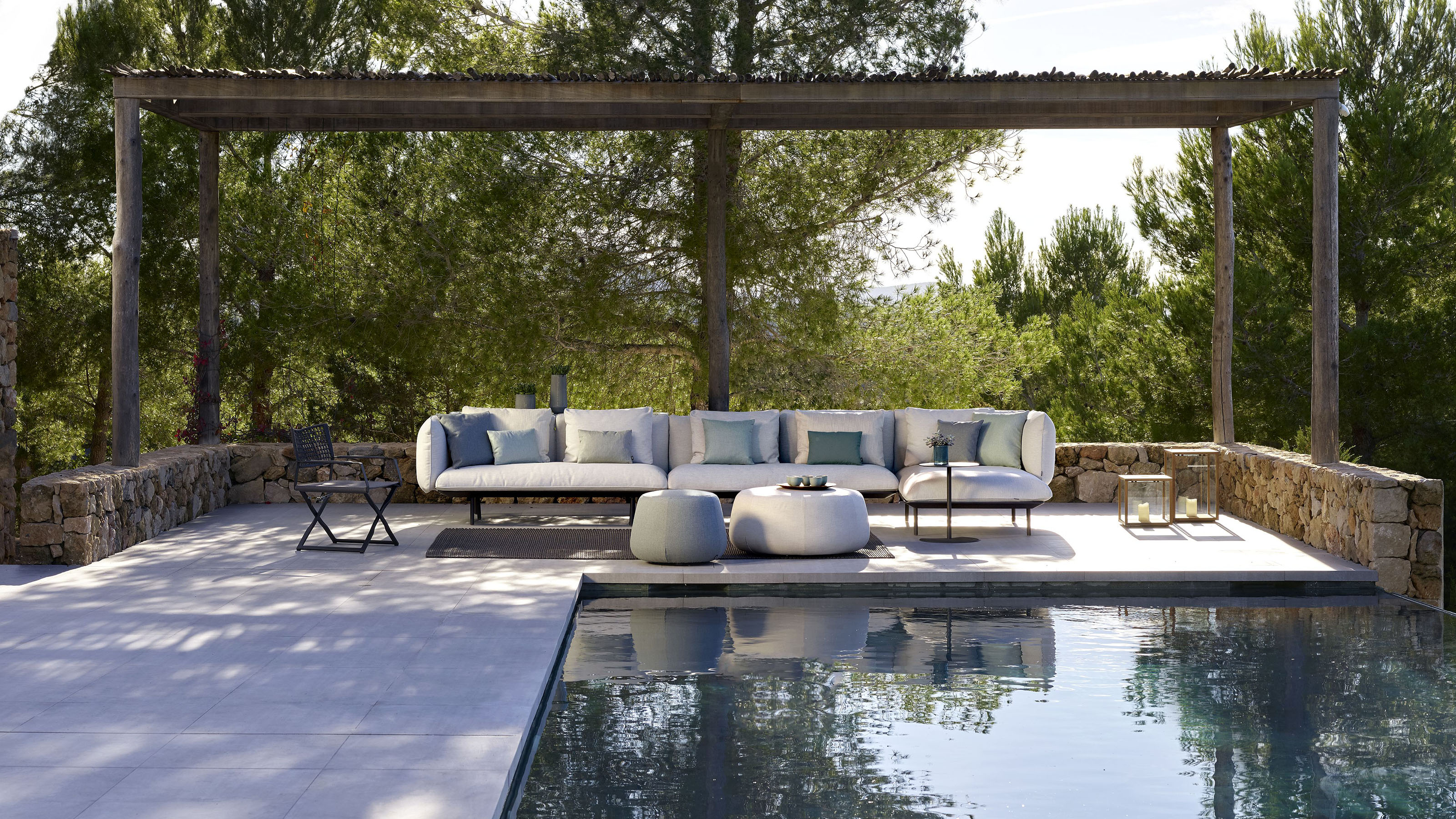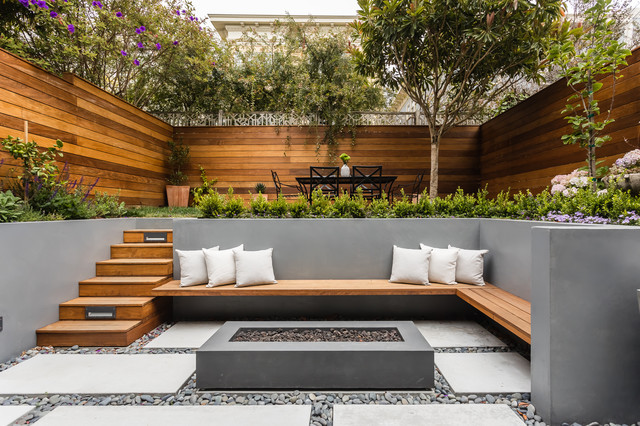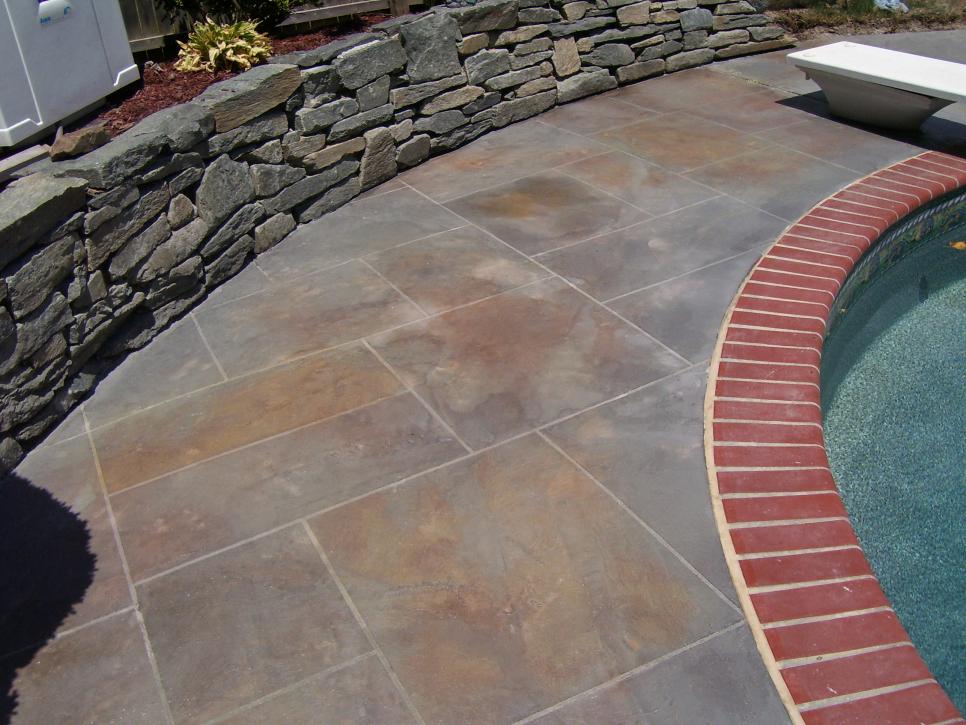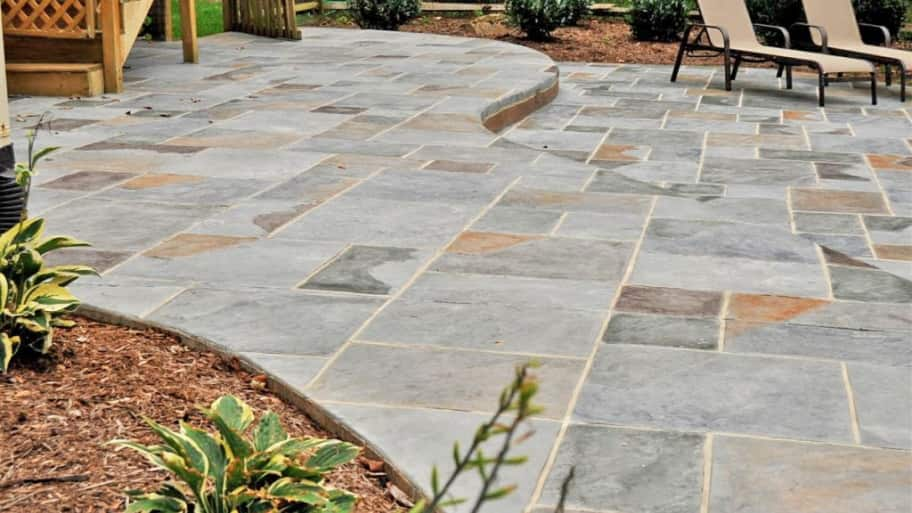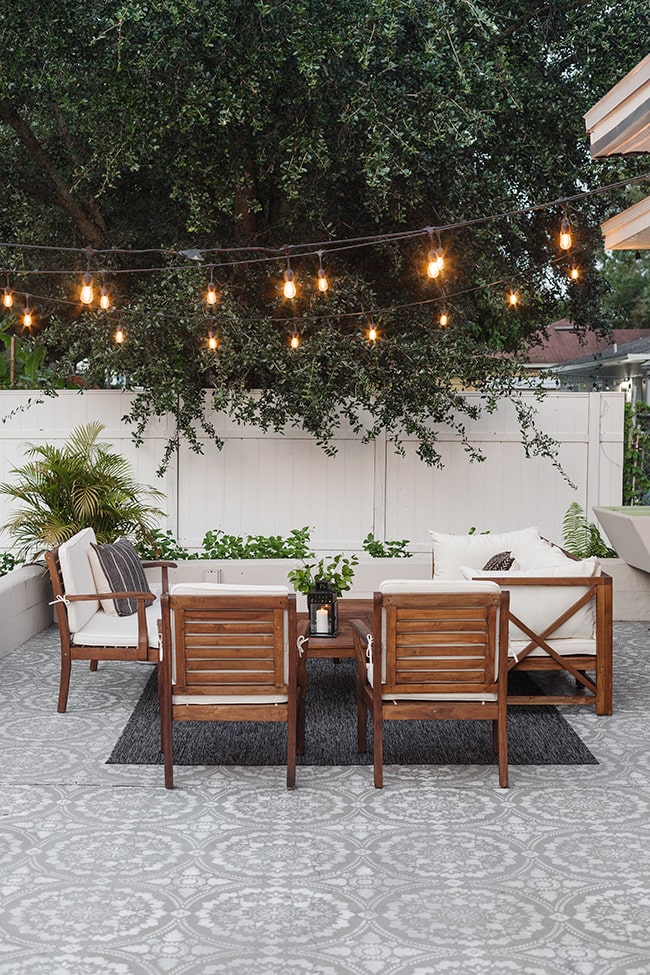Types of Outdoor Concrete Flooring Options
Concrete may not sound like the most glamorous material for outdoor spaces, but the world of outdoor concrete flooring options is vast and versatile, offering a plethora of choices to suit various styles and preferences. From classic and timeless to modern and innovative, these options can transform your outdoor area into a functional, visually appealing, and durable space.
- Stamped Concrete: Stamped concrete is a popular choice for outdoor flooring due to its versatility and aesthetic appeal. It involves imprinting patterns or textures onto the concrete surface to mimic the look of natural materials such as stone, brick, or wood. Stamped concrete can be customized to suit various design preferences, making it a versatile option for outdoor spaces.
- Stained Concrete: Stained concrete offers a unique and vibrant look to outdoor surfaces. This flooring option involves applying a stain or dye to the concrete, which penetrates the surface and creates a permanent color. Stained concrete can be customized to achieve various effects, from subtle earth tones to more bold and vibrant colors.
- Polished Concrete: Polished concrete is a sleek and modern option for outdoor flooring. This process involves grinding down the concrete surface to create a smooth and glossy finish. Polished concrete is durable and easy to maintain, making it suitable for high-traffic outdoor areas. It also reflects light, which can enhance the overall brightness and aesthetic of the space.
- Aggregate Concrete: Aggregate concrete is a decorative option that incorporates various materials such as stones, pebbles, or glass into the concrete mix. This creates a textured and visually appealing surface. Aggregate concrete can be customized with different colors and sizes of aggregates to achieve the desired look. It is a popular choice for driveways, patios, and walkways.
- Pavers or Tiles: Pavers or tiles made from concrete are a versatile outdoor flooring option. They come in various shapes, sizes, and designs, allowing for endless possibilities in terms of creating unique patterns and layouts. Concrete pavers or tiles are durable, easy to clean, and can withstand outdoor elements, making them suitable for a range of outdoor spaces.
- Exposed Aggregate: Exposed aggregate concrete is created by removing the top layer of the concrete to expose the aggregate materials underneath. This results in a textured and natural-looking surface. Exposed aggregate concrete is slip-resistant and can add a touch of elegance to outdoor areas such as pool decks, sidewalks, or outdoor seating areas.
- Concrete Overlays: Concrete overlays are a cost-effective option for transforming existing outdoor concrete surfaces. This involves applying a thin layer of polymer-modified concrete over the existing concrete to create a new and refreshed look. Concrete overlays can be customized with various colors, patterns, and textures, providing a quick and easy way to upgrade outdoor concrete flooring.

Design and Decorative Techniques for Outdoor Concrete Flooring
When it comes to outdoor concrete flooring, there are numerous design and decorative techniques that can be used to enhance its appearance and make it more visually appealing. These techniques can transform a plain and ordinary concrete floor into a stunning and inviting outdoor space. Here are some ideas for design and decorative techniques that can be employed for outdoor concrete flooring:
- Stamped Concrete: Stamped concrete is a popular technique used to create intricate patterns and textures on outdoor concrete floors. It involves pressing various patterns or designs onto the wet concrete before it sets, resulting in a textured and visually appealing surface. Stamped concrete can mimic the appearance of natural materials like stone, brick, or wood, providing a cost-effective alternative to these materials.
- Acid Staining: Acid staining is another technique that can be used to add color and depth to outdoor concrete flooring. Acid stains react with the chemicals present in the concrete, creating a unique and variegated color effect. This technique can be used to achieve a wide range of colors and can be combined with other decorative techniques for a more customized look.
- Decorative Saw Cutting: Saw cutting is a method that involves cutting patterns or designs into the surface of the concrete floor. This technique can create geometric shapes, straight lines, or even intricate designs, adding visual interest and enhancing the overall aesthetic appeal of the outdoor space.
- Exposed Aggregate: Exposed aggregate is a technique that involves removing the top layer of concrete to reveal the natural aggregates within. This creates a textured and decorative surface that can add both visual interest and slip resistance to outdoor concrete flooring. The exposed aggregates can be chosen based on color and size to match the desired design and aesthetic.
- Tile or Paver Inserts: Another way to enhance the design of outdoor concrete flooring is by incorporating tile or paver inserts. These inserts can be strategically placed within the concrete floor, creating patterns, borders, or even custom designs. Tiles or pavers can be chosen in various colors, sizes, and materials to complement the overall design theme.
- Stenciling: Stenciling is a technique that involves using pre-cut stencils to create patterns or designs on the concrete surface. This technique allows for a high level of customization and can be used to create intricate details or replicate the look of more expensive materials like tiles or bricks.
Tips for Maintaining and Protecting Outdoor Concrete Flooring
Regular Cleaning:
To keep your outdoor concrete flooring in top condition, it is important to regularly clean it. Sweep away any debris, such as leaves or dirt, and use a hose or pressure washer to remove any stains or grime. Avoid using harsh chemicals or abrasive cleaners that can damage the concrete surface.
Sealing:
Applying a concrete sealer is crucial for protecting outdoor concrete flooring from moisture, stains, and other damage. Choose a high-quality sealer that is specifically designed for outdoor use. Follow the manufacturer’s instructions for application and reapply the sealer as recommended to maintain its effectiveness.
Avoid Deicing Chemicals:
During winter months, it is common to use deicing chemicals to melt ice and snow on outdoor surfaces. However, these chemicals can cause damage to concrete flooring. Avoid using deicers that contain ammonium nitrate or ammonium sulfate, as they can corrode concrete. Instead, opt for sand or cat litter as a safer alternative for improving traction on icy surfaces.
Regular Inspections:
Frequently inspect your outdoor concrete flooring for any signs of cracks, chips, or other damage. Addressing these issues promptly can prevent further deterioration and potential safety hazards. If you notice any damage, consult a professional to determine the best course of action for repair or maintenance.
Use Protective Mats or Pads:
To prevent damage from heavy furniture, grills, or other equipment, place protective mats or pads underneath. This will help distribute the weight and protect the concrete surface from scratches or indentations. Additionally, using mats at entry points can help minimize the transfer of dirt and debris onto the flooring.
Avoid Sharp Objects:
Avoid using sharp objects, such as snow shovels with metal blades or heavy tools, directly on the concrete flooring. These can cause scratches, chips, or other permanent damage. Instead, use plastic shovels or brooms with soft bristles to clear away any snow or debris.
Regular Maintenance:
In addition to regular cleaning, it is important to conduct routine maintenance on outdoor concrete flooring. This may include resealing, repairing any cracks or chips, and removing any weeds or vegetation that may be growing between the concrete joints. Regular maintenance can extend the lifespan of the flooring and keep it looking its best.
Benefits of Outdoor Concrete Flooring
Outdoor concrete flooring offers numerous benefits that make it a popular choice for various outdoor spaces. Here are some of the key advantages of using concrete for outdoor flooring:
Durability: Concrete is known for its exceptional durability. When properly installed and maintained, outdoor concrete flooring can withstand heavy foot traffic, extreme weather conditions, and regular wear and tear. It is highly resistant to cracking, chipping, and erosion, making it a long-lasting option for outdoor areas.
Versatility: Outdoor concrete flooring offers a wide range of design options, allowing you to create a customized look that complements your outdoor space. It can be colored, stamped, or textured to resemble other materials like stone, brick, or wood. With a variety of finishes available, you can achieve different styles and aesthetics to suit your preferences.
Low maintenance: Compared to other outdoor flooring options, concrete requires minimal maintenance. Regular sweeping and occasional pressure washing are typically sufficient to keep it clean and in good condition. Concrete is also resistant to stains, making it easier to maintain its original appearance over time.
Cost-effective: Outdoor concrete flooring is a cost-effective choice for many homeowners. The initial installation cost is relatively low compared to other flooring materials, and its long lifespan helps to reduce replacement and maintenance expenses in the long run. Additionally, concrete’s energy-efficient properties can contribute to lower heating and cooling costs.
Safety: Concrete is a slip-resistant material, providing a safer surface for outdoor areas, especially when wet. It can be enhanced further with the addition of a textured finish or anti-slip sealant, ensuring better traction and reducing the risk of accidents.
Durability of Outdoor Concrete Flooring
Outdoor concrete flooring is highly durable and can withstand the challenges of outdoor environments. Its durability is attributed to several factors:
Strength: Concrete is a strong material that can withstand heavy loads and pressure. It can bear the weight of vehicles, furniture, and other objects without significant damage. Reinforced concrete, which incorporates steel bars or mesh, offers even greater strength and structural integrity.
Weather resistance: Concrete is resistant to fluctuations in temperature, moisture, and UV radiation. It can withstand freezing and thawing cycles, high heat, and exposure to sunlight without deteriorating or losing its structural integrity. This makes it an ideal choice for outdoor spaces that are subject to varying weather conditions.
7 Outdoor concrete flooring ideas outdoor concrete floors
9 DIY Cool u0026 Creative Patio Flooring Ideas u2022 The Garden Glove
Outdoor Flooring Ideas That Will Rejuvenate Your Backyard Space
9 DIY Cool u0026 Creative Patio Flooring Ideas u2022 The Garden Glove
An In-Depth Look at 30 Concrete Floor Designs – Concrete Flooring
Outdoor Flooring Ideas That Will Rejuvenate Your Backyard Space
Unique Outdoor Flooring Ideas HGTV
Top 7 Cheapest Patio Flooring to Choose From
Patio Floor Ideas for Spring and Summer – Run To Radiance
Related Posts:
- How To Stain Concrete Floors Outdoors
- DIY Stained Concrete Floors In Homes
- Concrete Floors Look Like Marble
- Concrete Floor Slab Mix Ratio
- Dark Brown Concrete Floor Paint
- Pretty Concrete Floors
- Stained Concrete Floors For Homes
- Decorative Concrete Floor Ideas
- Pouring A Concrete Floor In A Garage
- How To Get Smooth Concrete Floor
